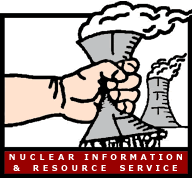
| Anti-nuclear movement |
|---|
 |
| By country |
| Lists |
More than 80 anti-nuclear groups are operating, or have operated, in the United States. [1] These include Abalone Alliance, Clamshell Alliance, Greenpeace USA, Institute for Energy and Environmental Research, Musicians United for Safe Energy, Nevada Desert Experience, Nuclear Control Institute, Nuclear Information and Resource Service, Public Citizen Energy Program, Shad Alliance, and the Sierra Club. These are direct action, environmental, health, and public interest organizations who oppose nuclear weapons and/or nuclear power. In 1992, the chairman of the Nuclear Regulatory Commission said that "his agency had been pushed in the right direction on safety issues because of the pleas and protests of nuclear watchdog groups". [2]
Contents
Some of the most influential groups in the anti-nuclear movement have had members who included Nobel Laureates (e.g., Linus Pauling and Hermann Joseph Muller). These scientists have belonged primarily to two groups: the Federation of American Scientists, and the Committee for Nuclear Responsibility. [3]